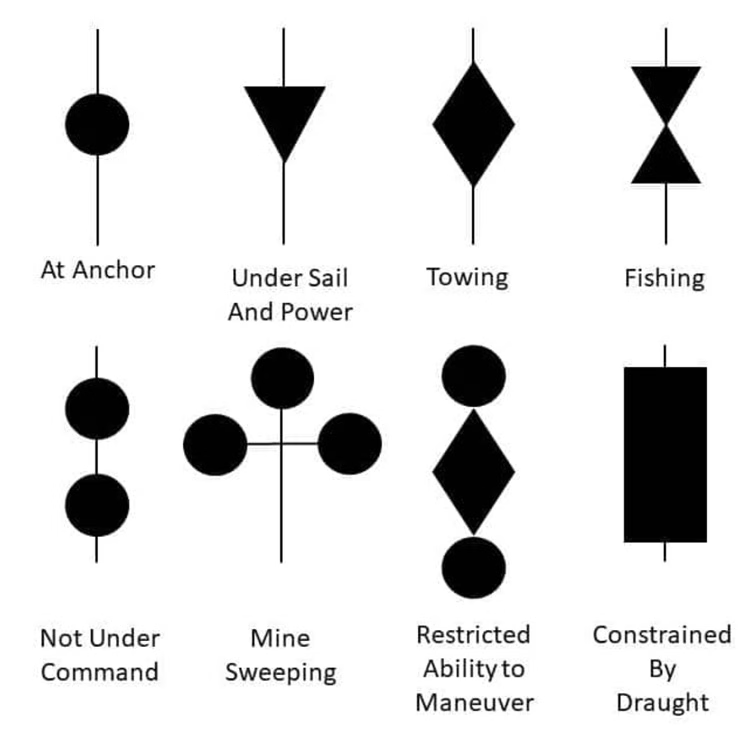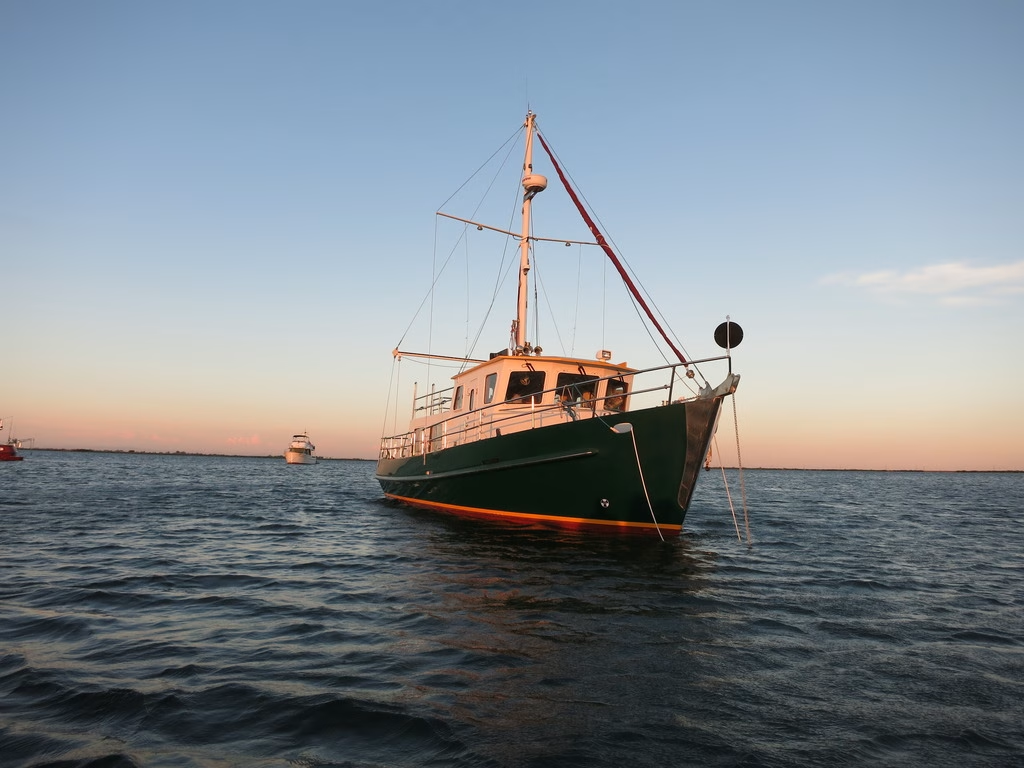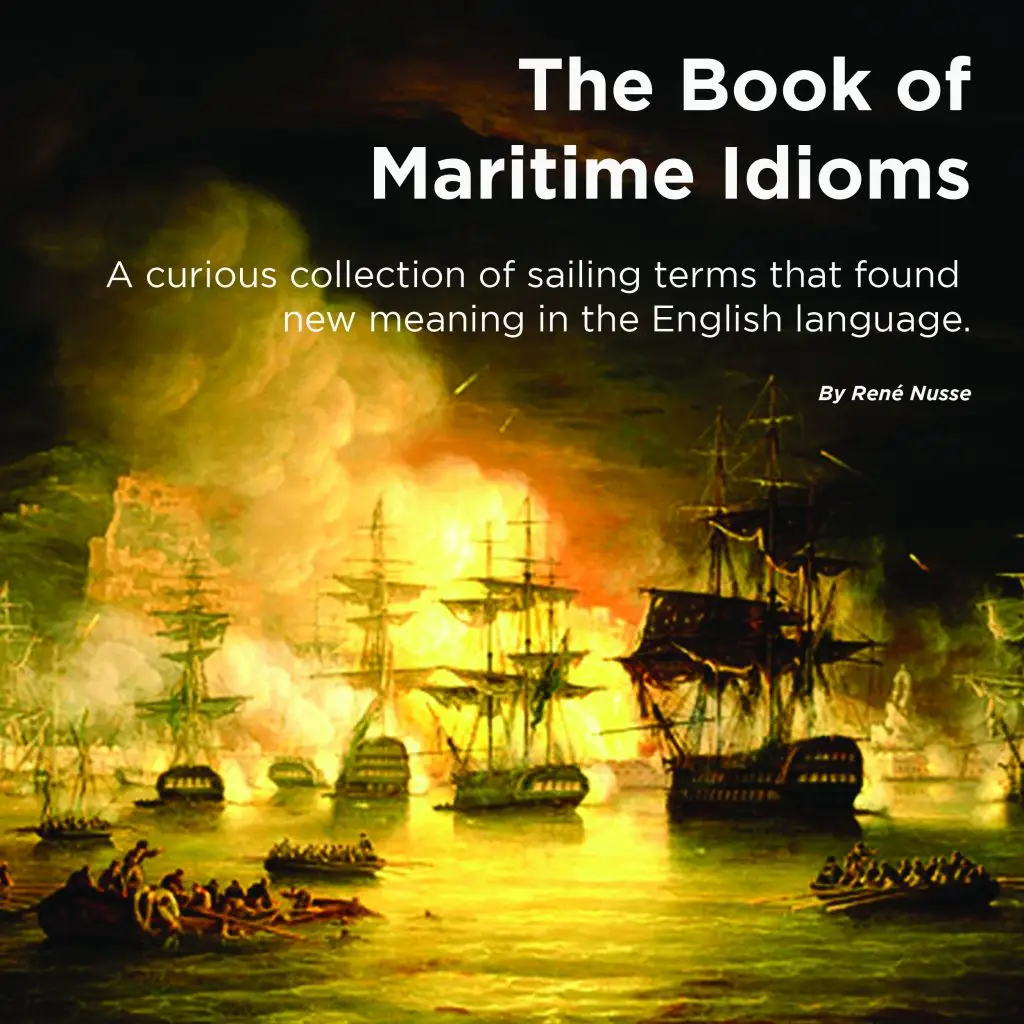Lights and day shapes sailors must know
Having lights and day shapes on a boat is important because they are essential for safe navigation and communication at sea. Here’s why:
Visibility and Collision Avoidance
Navigation lights (at night or in poor visibility) and day shapes (during daylight) let other vessels know:
What type of vessel are you
What are you doing (anchored, fishing, restricted in manoeuvrability, etc.)?
Which way are you moving, and who has the right of way
This prevents collisions, especially in busy or narrow waterways.
2. Compliance with COLREGS
International maritime law (the COLREGS) requires the proper use of lights and shapes.
Non-compliance can lead to legal consequences, fines, or liability in the event of an accident.
Communication Without Words
Lights and shapes communicate intentions and limitations without radio or verbal contact.
For example, a red-over-white light combo tells others you’re engaged in fishing.
A ball-diamond-ball shape means you’re restricted in manoeuvrability.
Safety of Life at Sea
Knowing what other vessels are doing helps you make safe decisions when navigating near them.
It’s especially critical at night or in fog when visibility is limited.
Preventing Misunderstandings
Proper shapes/lights tell others if:
You’re anchored and not moving
You’re under command or disabled
You have limited ability to move or steer
Without these indicators, other mariners might misjudge your actions, increasing the risk of accidents.
Basic nav lights on a boat
Let’s have a look at the basic lights on a boat.
🔴🟢 1. Sidelights
Red (port/left side)
Green (starboard/right side)
Each covers 112.5° of arc, visible from directly ahead to just behind the beam on each side.
⚪ 2. Stern Light
White light mounted at the rear (stern) of the boat.
It shows an arc of 135°, only visible from behind the boat.
⚪ 3. Masthead Light (for power-driven vessels)
White light is visible over a 225° arc — from directly ahead to 22.5° abaft (behind) on each side of the beam.
Mounted on the foremast or cabin top.
Required only when under engine power.
⛵ Sailing boats under sail alone do not use a masthead light — they use sidelights and a stern light.
⚪ 4. All-Round White Light (combo light for small boats)
Used on boats under 12 meters in length.
Combines masthead and stern light into one white 360° light.
Often used on dinghies, small motorboats, and rowboats.
Minimum Lights Required by Boat Size
| Boat Length | Minimum Required Lights |
|---|---|
| Under 7m (23ft) | All-round white light (sidelights optional if practical) |
| 7–12m (23–39ft) | Sidelights + stern light OR all-round white light |
| 12m–20m (39–65ft) | Sidelights + stern + masthead (separate) |
| Over 20m | More detailed lighting setups as per COLREGs |
Tips:
Lights must be visible for specific distances (e.g., 2nm for sidelights on boats 12–20m).
Lights should be placed high enough and arranged so they’re not obstructed.
Don’t mix up anchor lights (white all-around when not underway) with masthead lights (used only when underway under power).

Basic day shapes on a boat
Here’s a simple rundown of the basic day shapes used on boats — black geometric shapes (balls, cones, diamonds, or cylinders) that indicate a vessel’s status or activity during daylight.

Tips:
A sailing vessel sailing with the motor on needs to have a downward triangle displayed during daytime travel.
Sailing vessels over seven meters in waters where other boats are navigating must display a black ball when anchored.

Author
-

Rene is a keelboat instructor and sailing coach in the Mandurah area WA. He is also the author of several books about sailing including "The Book of Maritime Idioms" and "Renaming your boat".
View all posts


